Michael Horn: A Look Behind The Curtain At How A MOOC Is Made
By Paul Glader on November 22, 2013
Blended Learning, Domestic, Education Quality, K-12, MOOCs, Personalized Learning, Required, Technology
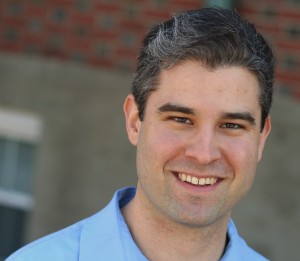
Michael Horn is Director of Education at The Clayton Christensen Institute and co-author of “Disrupting Class.”
By Michael Horn
The emerging world of K–12 blended learning remains a young field full of promise for personalizing learning and boosting outcomes for all students. More and more bright spots are emerging every day.
But there are also challenges. With the buzz surrounding 1:1 device programs and new classroom apps, there are risks that people might just take education technologies and layer it over the existing monolithic classroom processes and not fundamentally change the way students learn. The hype around and cramming of technology remains a serious risk to the field.
To help educators make the shift to blended learning that truly moves the needle for students, we’ve been working for the past few months with Silicon Schools Fund and the New Teacher Center to create a MOOC on Coursera about high-quality blended learning. The free course launches Tuesday.
Diving into the online-learning revolution about which I’ve written and spoken so much for the last seven years by actually creating an online learning experience has been a fascinating and humbling experience. Without the hard work of an entire team—from our team at the Clayton Christensen Institute to our partners and friends at the Silicon Schools Fund and New Teacher Center and from our videographer Eric L. Wong to The Learning Accelerator, which provided support—it’s been clear to me that we could not have pulled this off. This has made me appreciate so much more the hard work of those instructional designers who work to create high-quality online learning experiences for their full-time job—as well as how early we are still in the emergence of the newer MOOC platforms. It also makes me further wonder about the quality of much of what has been placed on the MOOC platforms to date. Below are a few behind-the-scenes shots of the making of the MOOC.
From left to right, Brian Greenberg, Michael B. Horn, and Rob Schwartz film the opening video of the blended learning MOOC. Photo by Anna Gu, Research Assistant at the Clayton Christensen Institute
Videographer Eric L. Wong and Michael Horn review some notes during a MOOC film shoot. Photo by Anna Gu.
Caitrin Wright of the Silicon Schools Fund and Eric L. Wong working during a filming session with Rob Schwartz. Photo by Anna Gu.
Our six-week course draws from interviews with a number of practitioners in the K–12 world of blended learning about how they have combined online learning with thoughtfully designed face-to-face interactions to create dramatic gains in student learning. We examine the critical element of mastery-based learning, the motivational benefits of greater student ownership over learning, and the opportunity to boost students’ non-cognitive skills in these environments. We also look at gains from the perspective of blended-learning teachers, whose roles shift into more targeted “guides on the side” who are able to develop deeper relationships with students.
Three schools act as our protagonists throughout the course to give course participants a real view into why to do blended learning and how to do it: KIPP Comienza Community Prep of KIPP LA, Gilroy Prep of Navigator Schools, and Summit Denali of Summit Public Schools. These schools provide a window into how blended learning works on the ground at various levels—for students, teachers, and administrators. We could not have created this course without the amazing cooperation and insights from the students, teachers, and leaders at these schools.
It’s of course impossible to capture all of the valuable insights that these schools have to offer about blended learning in one day of filming at each school, which made the sessions challenging. But these days were undoubtedly the most rewarding and enlightening—not only for us, but we also suspect for those who take the course.
Brian Greenberg and Eric L. Wong discuss a camera angle during a film shoot at KIPP LA. Photo by Michael B. Horn.
They also provided some great light-hearted moments with the students that kept us focused on the ultimate reason for this work.
Brian Greenberg dons an elephant hat while interviewing a student at KIPP LA. Photo by Michael B. Horn.
What we’ve learned–and what emerges in the course–is that there is no definitive way to do blended learning. The schools that we profile have made many different decisions and all produced wonderful results for students.
In the course, we also expect to learn a lot from the participants, who will take ownership of their learning by constructing a blended-learning experience in their own context as their primary assignment. In the process, we believe that they will create a host of new innovations and make a series of novel choices around blended-learning design. With over 10,000 students signed up from literally around the world—one of the most exciting moments occurred within hours of opening up the course page this past Friday, as students began discussing a range of blended-learning topics—we are pretty certain there will be something for everyone in this course. And that means that the making of the course will truly be a collaborative—and ongoing—process. At the end of the experience, I’ll try to report out once again some of the high-level takeaways. We’re excited to get going and keep learning.
Related Posts


Tips & Pitches
Latest WA Features
-
Online Courses Are Expanding, Along With Questions About Who Owns The Material
-
Why Size Matters: Consolidation Sweeps Across US Higher Ed
-
Trend: Corporate U Employers Offering Just In Time Education To Workers
-
Subterfuge & Skullduggery In The College Rankings Game
-
“Instreamia” Shakes Loose Moss By Launching Spanish Language Mini-MOOC
Domestic, Education Quality, For-Profit, Friend, Fraud, or Fishy, K-12, Legislation, Opinion, Personalized Learning, Regulatory, Required, Universities & Colleges - Apr 29, 2014 - 0 Comments
Michael Horn: NCAA March Madness Followed By April Blunder In Online Learning
More In For-Profit
- The Economy Is Forcing Tuition To Fall Rapidly At Private, For-Profit Colleges
- Kamenetz: Jeb Bush As Controversial Leader Of Aspen Task Force on Learning & The Internet
- Columnist Ryan Craig: The Best Of Times Could Return As For-Profit Edu Invests
- Bubble Analysis: Trace Urdan on Why This Era of Ed Investing Could Be Different
- A Blended Path? How American Honors Cuts Cost of Four Year Degree by Over a Third
Community Colleges Cost of Education Domestic For-Profit Required Student Loans Universities & Colleges
Blended Learning, Domestic, Education Quality, Gamification, K-12, Open Source Education, Required, Startups, Technology - May 22, 2015 - 0 Comments
iCivics: Video Games as Middle School Social Studies Curriculum
More In Technology
- Online Education As A Postmodern Societal Response
- MakerBot Academy: A 3-D Printer In Every Classroom
- Michael Horn: A Look Behind The Curtain At How A MOOC Is Made
- Koller, Khan and Agarwal At The NYT’s Schools of Tomorrow Conference
- Video: New NESTA Report, Three Steps To Assess Digital Innovation in Education
Domestic, Education Quality, For-Profit, Friend, Fraud, or Fishy, K-12, Legislation, Opinion, Personalized Learning, Regulatory, Required, Universities & Colleges - Apr 29, 2014 - 0 Comments
Michael Horn: NCAA March Madness Followed By April Blunder In Online Learning
More In Friend, Fraud, or Fishy
- Online Education As A Postmodern Societal Response
- Apple Tightens Its 94% Choke-hold On The Education Tablet Market
- Michael Horn: Why Obama’s Proposals Won’t Entirely Revolutionize HigherEd
- Columnist Ryan Craig: The Curious Case Of HigherEd Accreditation
- McGraw-Hill Executive Speaking About Big Data: “Don’t look at us, look at Joe Camel”
Domestic Ebooks Education Quality Ereaders Ethics Friend, Fraud, or Fishy K-12 Publishers & Curriculum Required Textbooks



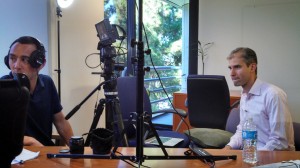
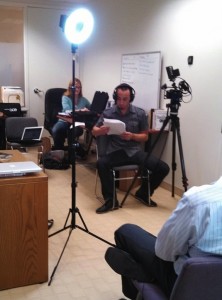
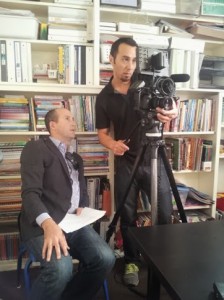
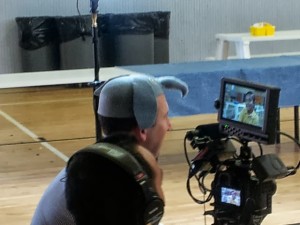







Reply